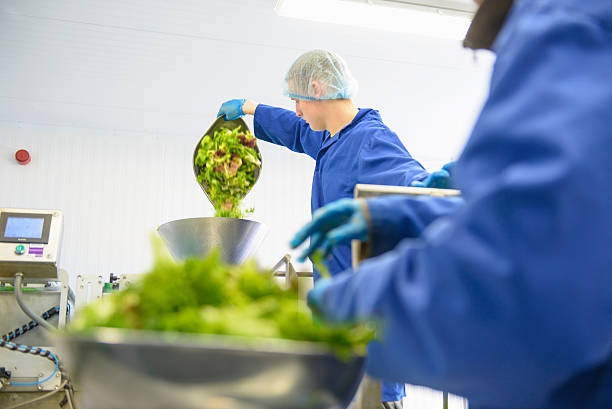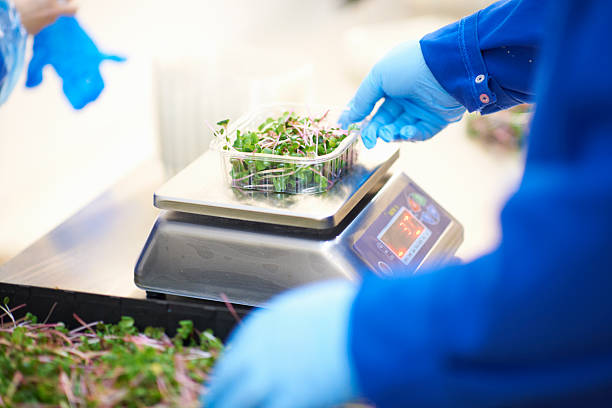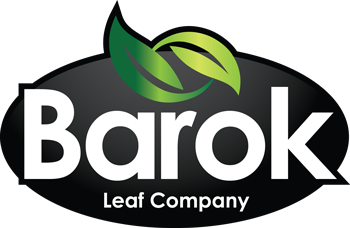Industry

Food Safety & Quality
At BarokLeaf we are committed to meeting the strict regulations of food hygiene according to both local authority regulations and those of international standards. In fact, we aim to exceed them! We know that customers trust the Barokleaf name and it is our duty to ensure that promise is not broken.
Food consumption is a very intimate experience and we recognise the consumer is trusting that every quality measure has taken place before products reach stores.
Our products are selected at the right time for freshness and taste. We only use the best leaves in our bags. The leaves go through a three-part washing process to ensure they are thoroughly clean. They are checked and then gently dried to remove any excess water for longer preservation. All of this happens in a temperature controlled environment. The bags are finally sealed and ready for dispatch. Temperature controlled vans are used to ensure products reach our stockists in prime condition for resale.
Our production quality managers constantly check for any issues during and after manufacturing. Regular staff training is an integral part of ensuring quality is maintained.


Cool Chain integrity
But how do we maintain that fresh locked flavour? This is due to our cold logistics chain and it starts with making sure we pick or source the best leaves, ripe and ready. Maintaining the correct cold temperatures is critical to freshness, in the entire chain, +4ºC is optimum. This critical number is the number from preparation, storage to delivery. That’s how we work hard to keep our salads chilled every step of the way on their journey to you.
Lettuce Nutrition
Lettuce is one of the favorite green leafy vegetables. Its crispy, green/crimson-red leaves are one of the incredible sources of essential nutrients that benefit health. Indeed, it is among the most sought after greens, be it in your crunchy green salads or healthy sandwiches!
Lettuce leaves exude milk-like fluid (sap) when cut, and hence its name derived from Latin Lactuca for milk. Botanically this marvelous, nutrition rich leafy green belongs to the daisy family of Asteraceae. Scientific name: Lactuca sativa
Lettuce leaves are one of the very low-calorie green vegetables. 100 g fresh greens provide just 15 calories. Nonetheless, they are the storehouse of many phytonutrients that possess health promoting and disease prevention properties.
Vitamins in lettuce are plentiful. Its fresh leaves are an excellent source of several Vitamin-A and β-carotenes. Just 100 g of fresh, raw-lettuce provides 247% of daily vitamin A, and 4443 µg of β-carotene (Carotenes convert into vitamin-A in the body; 2 µg of carotene is considered equivalent to 1 IU of vitamin-A). These compounds have antioxidant properties. Vitamin A is required for maintaining healthy mucosa and skin and is also essential for vision. Consumption of natural fruits and vegetables rich in flavonoids helps to protect the body from lung and oral cavity cancers.
It is a rich source of vitamin-K. Vitamin-K has a potential role in the bone metabolism where it thought to increase bone mass by promoting osteoblastic activity in the bone cells. It also has an established role in the Alzheimer’s disease patients by limiting neuronal damage in the brain.
Fresh leaves contain good amounts folates and vitamin C. Folates are part of co-factors in the enzyme metabolism required for DNA synthesis and therefore, play a vital role in the prevention of the neural tube defects in the baby (fetus) during pregnancy.
Vitamin C is a powerful natural antioxidant; regular consumption of foods rich in vitamin-C helps the body develop resistance against infectious agents and scavenge harmful, pro-inflammatory free radicals.
Zeaxanthin (1730 µg per 100 g), an important dietary carotenoid in lettuce, is selectively absorbed into the retinal macula lutea, where it thought to provide antioxidant and filter UV rays damaging the retina. Diet rich in xanthin and carotenes is believed to offer some protection against age-related macular disease (ARMD) in the older adults.
It also contains healthy amounts of minerals like iron, calcium, magnesium, and potassium, which are very much essential for body metabolism. Potassium is an important component of cell and body fluids that helps controlling heart rate and blood pressure. The body uses manganese as a co-factor for the antioxidant enzyme, superoxide dismutase. Copper required in the production of red blood cells. Iron is essential for red blood cell formation.
It is rich in the B-complex group of vitamins like thiamin, vitamin B-6 (pyridoxine), riboflavins.
Regular inclusion of lettuce in salads is known to prevent osteoporosis, iron-deficiency anemia, and believed to protect from cardiovascular diseases, ARMD, Alzheimer’s disease and cancers.
(source: http://www.nutrition-and-you.com/lettuce.html)
